Auschwitz: Concentration Camp, Facts, Location | HISTORY (original) (raw)
Auschwitz, also known as Auschwitz-Birkenau, opened in 1940 and was the largest of the Nazi concentration and death camps. Located in southern Poland, Auschwitz initially served as a detention center for political prisoners. However, it evolved into a network of camps where Jewish people and other perceived enemies of the Nazi state were exterminated, often in gas chambers, or used as slave labor. Some prisoners were also subjected to barbaric medical experiments led by Josef Mengele (1911-79). During World War II (1939-45), more than 1 million people, by some accounts, lost their lives at Auschwitz.
In January 1945, with the Soviet army approaching, Nazi officials ordered the camp abandoned and sent an estimated 60,000 prisoners on a forced march to other locations. When the Soviets entered Auschwitz, they found thousands of emaciated detainees and piles of corpses left behind.
Auschwitz: Genesis of Death Camps
After the start of World War II, Adolf Hitler (1889-1945), the chancellor of Germany from 1933 to 1945, implemented a policy that came to be known as the “Final Solution.” Hitler was determined not just to isolate Jews in Germany and countries annexed by the Nazis, subjecting them to dehumanizing regulations and random acts of violence. Instead, he became convinced that his “Jewish problem” would be solved only with the elimination of every Jew in his domain, along with artists, educators, Romas, communists, homosexuals, the mentally and physically handicapped and others deemed unfit for survival in Nazi Germany.
Did you know? In October 1944, a group of Auschwitz "Sonderkommando," young Jewish males responsible for removing corpses from crematoriums and gas chambers, staged a revolt. They assaulted their guards, using tools and makeshift explosives, and demolished a crematorium. All were apprehended and killed.
To complete this mission, Hitler ordered the construction of death camps. Unlike concentration camps, which had existed in Germany since 1933 and were detention centers for Jews, political prisoners and other perceived enemies of the Nazi state, death camps existed for the sole purpose of killing Jews and other “undesirables,” in what became known as the Holocaust.
Auschwitz: The Largest of the Death Camps
Auschwitz, the largest and arguably the most notorious of all the Nazi death camps, opened in the spring of 1940. Its first commandant was Rudolf Höss (1900-47), who previously had helped run the Sachsenhausen concentration camp in Oranienburg, Germany. Auschwitz was located on a former military base outside Oswiecim, a town in southern Poland situated near Krakow, one of the country’s largest cities. During the camp’s construction, nearby factories were appropriated and all those living in the area were forcibly ejected from their homes, which were bulldozed by the Nazis.
Auschwitz originally was conceived as a concentration camp, to be used as a detention center for the many Polish citizens arrested after Germany annexed the country in 1939. These detainees included anti-Nazi activists, politicians, resistance members and luminaries from the cultural and scientific communities. Once Hitler’s Final Solution became official Nazi policy, however, Auschwitz was deemed an ideal death camp locale. For one thing, it was situated near the center of all German-occupied countries on the European continent. For another, it was in close proximity to the string of rail lines used to transport detainees to the network of Nazi camps.
However, not all those arriving at Auschwitz were immediately exterminated. Those deemed fit to work were employed as slave labor in the production of munitions, synthetic rubber and other products considered essential to Germany’s efforts in World War II.
Auschwitz and Its Subdivisions
At its peak of operation, Auschwitz consisted of several divisions. The original camp, known as Auschwitz I, housed between 15,000 and 20,000 political prisoners. Those entering its main gate were greeted with an infamous and ironic inscription: “Arbeit Macht Frei,” or “Work Makes You Free.”
Auschwitz II, located in the village of Birkenau, or Brzezinka, was constructed in 1941 on the order of Heinrich Himmler (1900-45), commander of the “Schutzstaffel” (or Select Guard/Protection Squad, more commonly known as the SS), which operated all Nazi concentration camps and death camps. Birkenau, the biggest of the Auschwitz facilities, could hold some 90,000 prisoners.
It also housed a group of bathhouses where countless people were gassed to death, and crematory ovens where bodies were burned. The majority of Auschwitz victims died at Birkenau. More than 40 smaller facilities, called subcamps, dotted the landscape and served as slave-labor camps. The largest of these subcamps, Monowitz, also known as Auschwitz III, began operating in 1942 and housed some 10,000 prisoners.
Life and Death in Auschwitz
By mid-1942, the majority of those being sent by the Nazis to Auschwitz were Jews. Upon arriving at the camp, detainees were examined by Nazi doctors. Those detainees considered unfit for work, including young children, the elderly, pregnant women and the infirm, were immediately ordered to take showers. However, the bathhouses to which they marched were disguised gas chambers. Once inside, the prisoners were exposed to Zyklon-B poison gas. Individuals marked as unfit for work were never officially registered as Auschwitz inmates. For this reason, it is impossible to calculate the number of lives lost in the camp.
For those prisoners who initially escaped the gas chambers, an undetermined number died from overwork, disease, insufficient nutrition or the daily struggle for survival in brutal living conditions. Arbitrary executions, torture and retribution happened daily in front of the other prisoners.
Some Auschwitz prisoners were subjected to inhumane medical experimentation. The chief perpetrator of this barbaric research was Josef Mengele (1911-79), a German physician who began working at Auschwitz in 1943. Mengele, who came to be known as the “Angel of Death,” performed a range of experiments on detainees. For example, in an effort to study eye color, he injected serum into the eyeballs of dozens of children, causing them excruciating pain. He also injected chloroform into the hearts of twins to determine if both siblings would die at the same time and in the same manner.
Liberation of Auschwitz: 1945
As 1944 came to a close and the defeat of Nazi Germany by the Allied forces seemed certain, the Auschwitz commandants began destroying evidence of the horror that had taken place there. Buildings were torn down, blown up or set on fire, and records were destroyed.
In January 1945, as the Soviet army entered Krakow, the Germans ordered that Auschwitz be abandoned. Before the end of the month, in what came to be known as the Auschwitz death marches, an estimated 60,000 detainees, accompanied by Nazi guards, departed the camp and were forced to march to the Polish towns of Gliwice or Wodzislaw, some 30 miles away. Countless prisoners died during this process; those who made it to the sites were sent on trains to concentration camps in Germany.
When the Soviet army entered Auschwitz on January 27, they found approximately 7,600 sick or emaciated detainees who had been left behind barbed wire. The liberators also discovered mounds of corpses, hundreds of thousands of pieces of clothing and pairs of shoes and seven tons of human hair that had been shaved from detainees before their liquidation. According to some estimates, between 1.1 million to 1.5 million people, the vast majority of them Jews, died at Auschwitz during its years of operation. An estimated 70,000 to 80,000 Poles perished at the camp, along with 19,000 to 20,000 Romas and smaller numbers of Soviet prisoners of war and other individuals.
Auschwitz Today
Today, Auschwitz is open to the public as the Auschwitz-Birkenau Memorial and Museum. It tells the story of the largest mass murder site in history and acts as a reminder of the horrors of genocide.
Images from the Death Camps
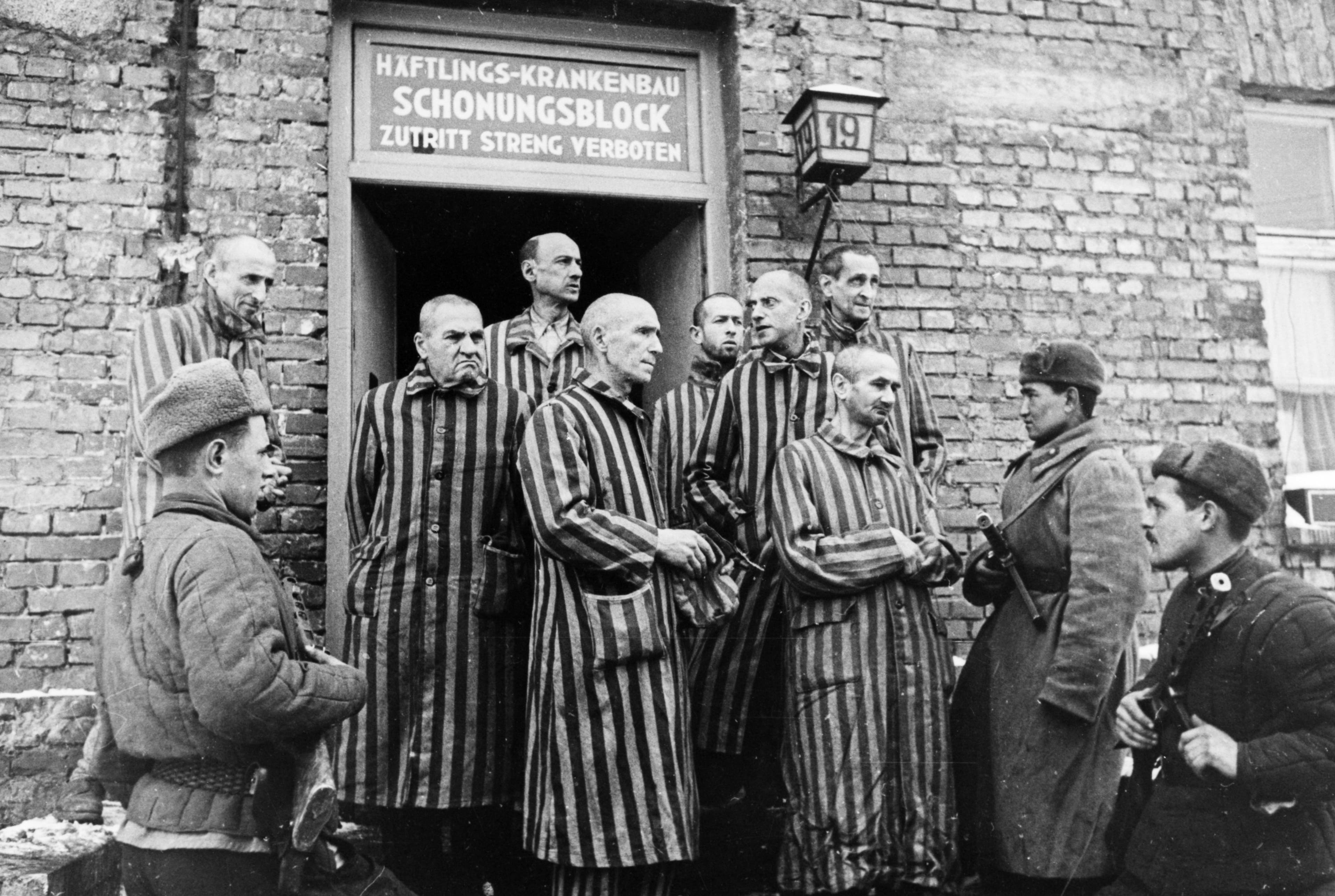
Soviet Red Army soldiers stand with liberated prisoners of the Auschwitz Concentration Camp in this 1945 photo.
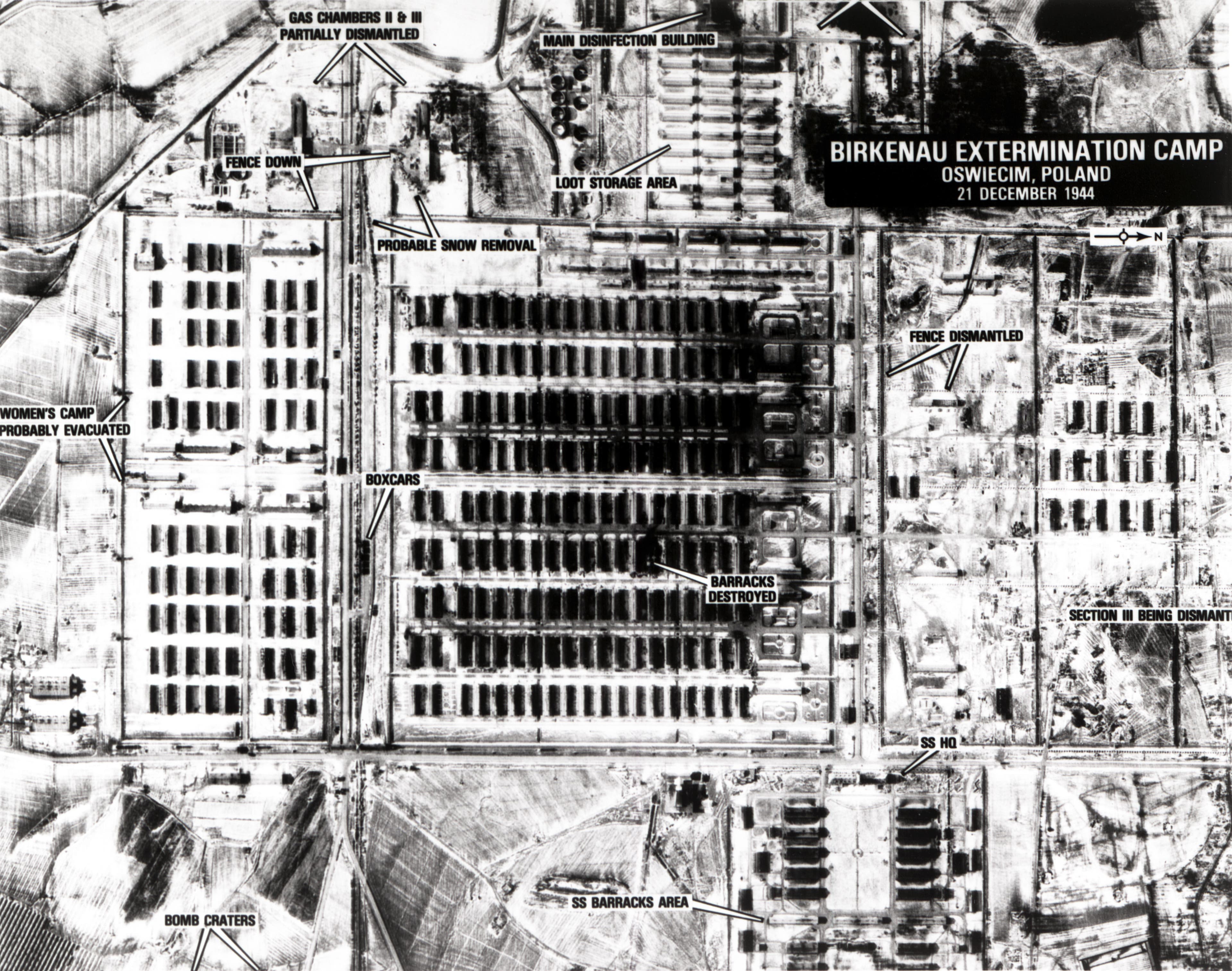
An aerial reconnaissance photograph over occupied Poland, shows Auschwitz II (Birkenau Extermination Camp) on December 21, 1944. It is one of a series of aerial photographs taken by Allied reconnaissance units under the command of the 15th U.S. Army Air Force during missions dating between April 4, 1944 and January 14, 1945.
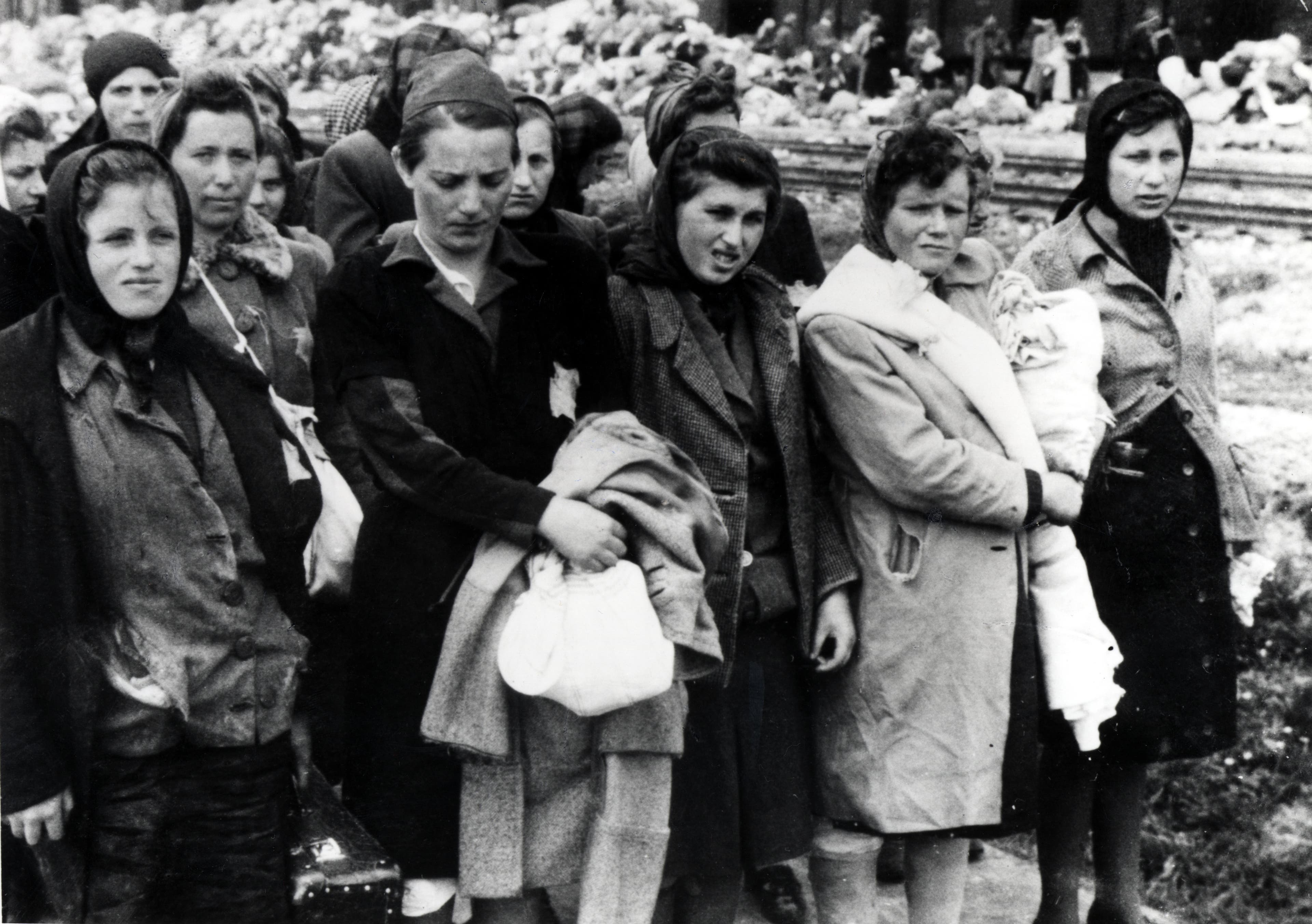
Hungarian Jews arrive in Auschwitz-Birkenau, in German-occupied Poland in June 1944. Between May 2 and July 9, more than 425,000 Hungarian Jews were deported to Auschwitz.
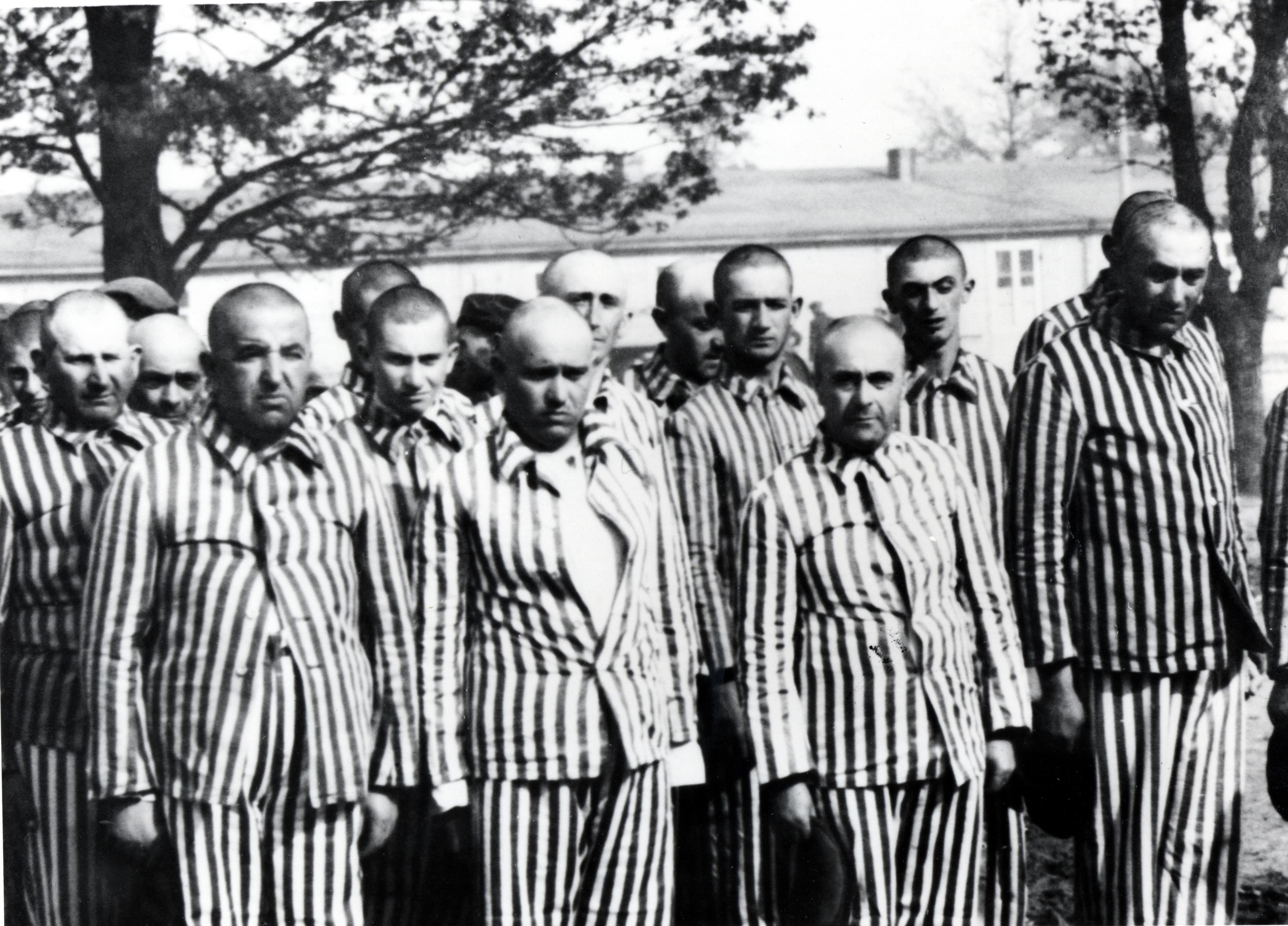
Men selected for forced labor from amongst Hungarian Jews in Auschwitz-Birkenau, in German-occupied Poland, June 1944.
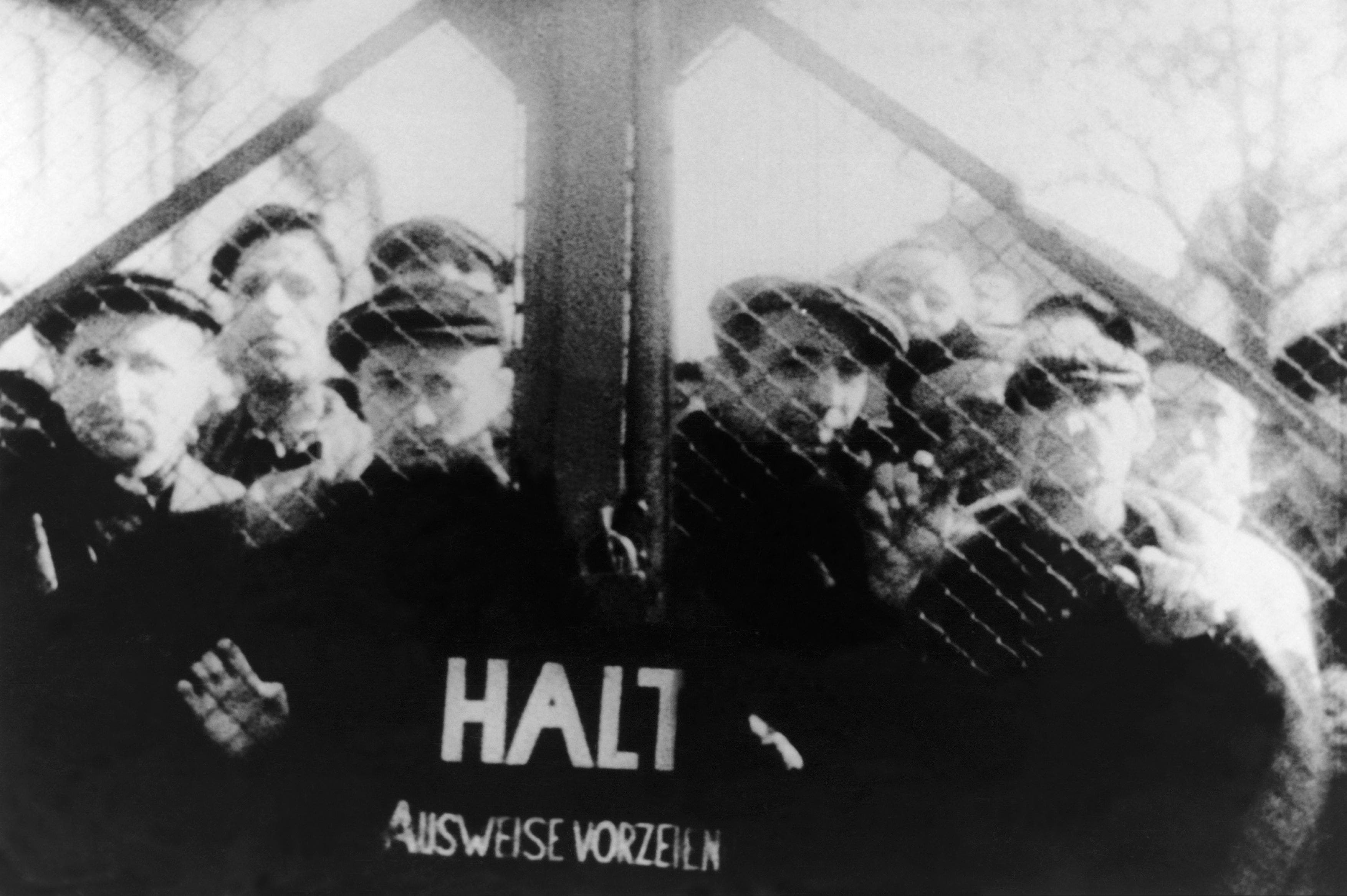
In this photo taken in January 1945, survivors stand behind the gates of the camp at Auschwitz, as they watch the arrival of Soviet troops.
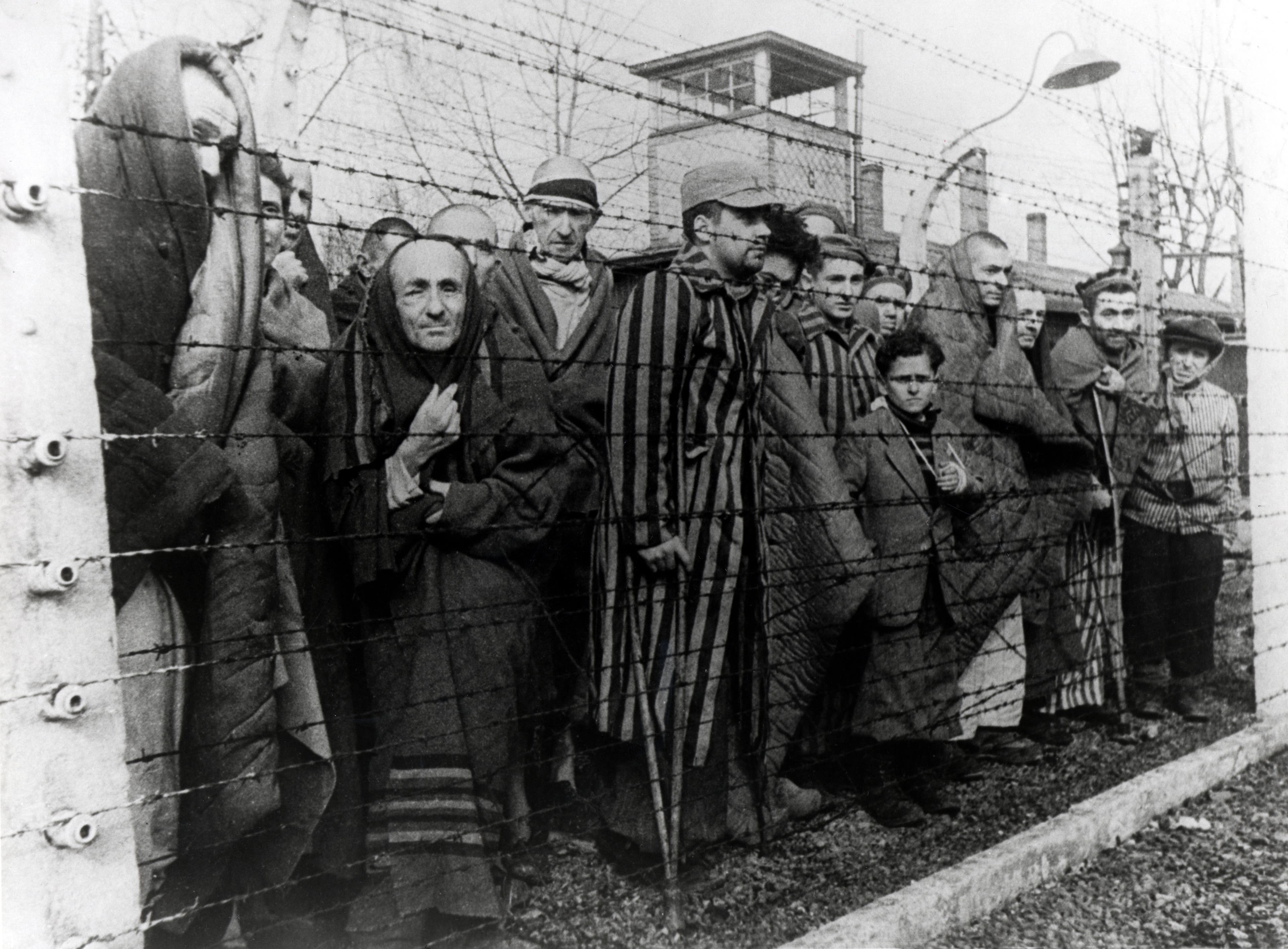
This photo of Auschwitz survivors was taken by a Soviet photographer in February 1945 during the making of a film about the liberation of the camp.
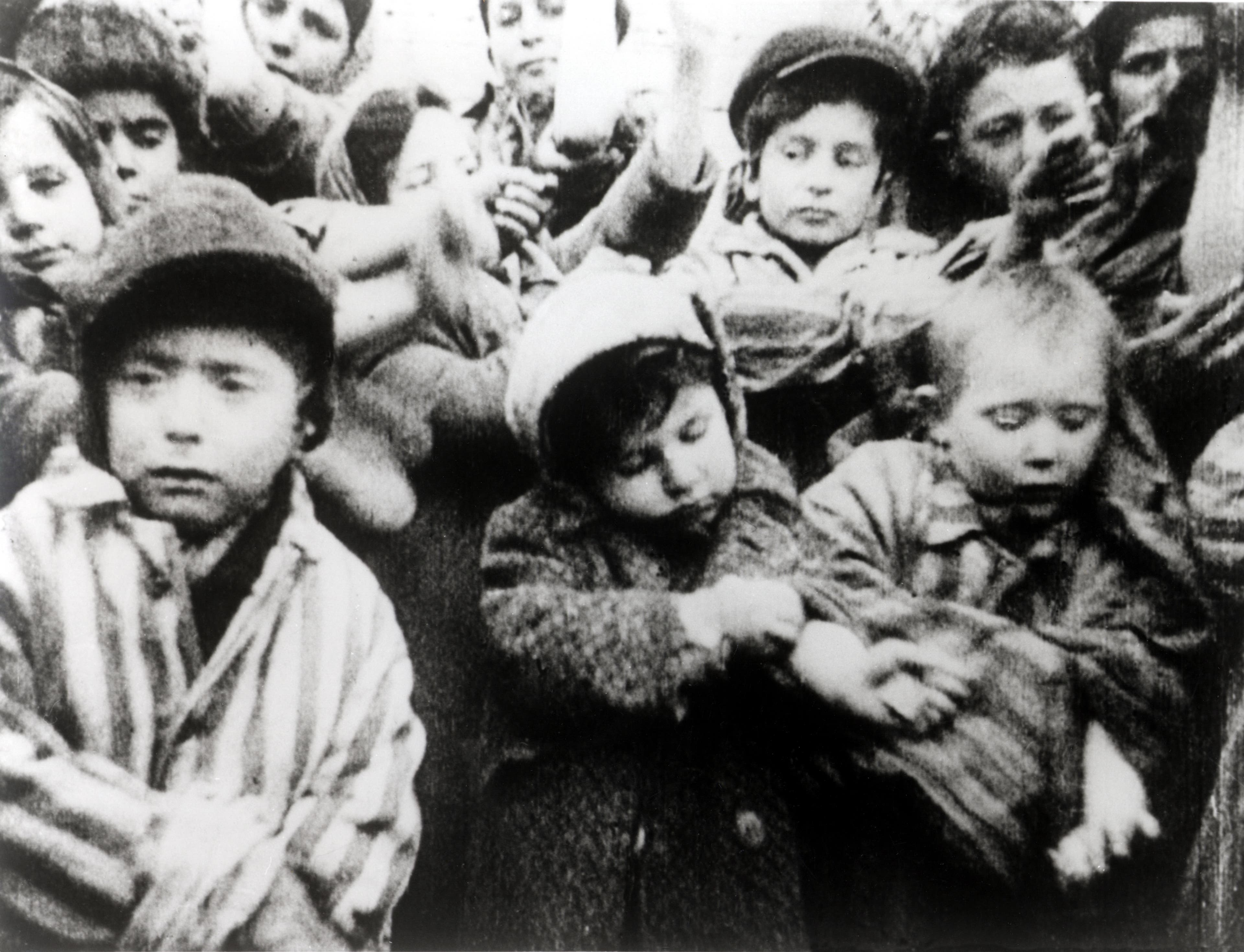
Child survivors of Auschwitz show their tattooed arms in a photo as part of the film about the camp's liberation. Soviet filmmakers dressed the children in clothing from adult prisoners
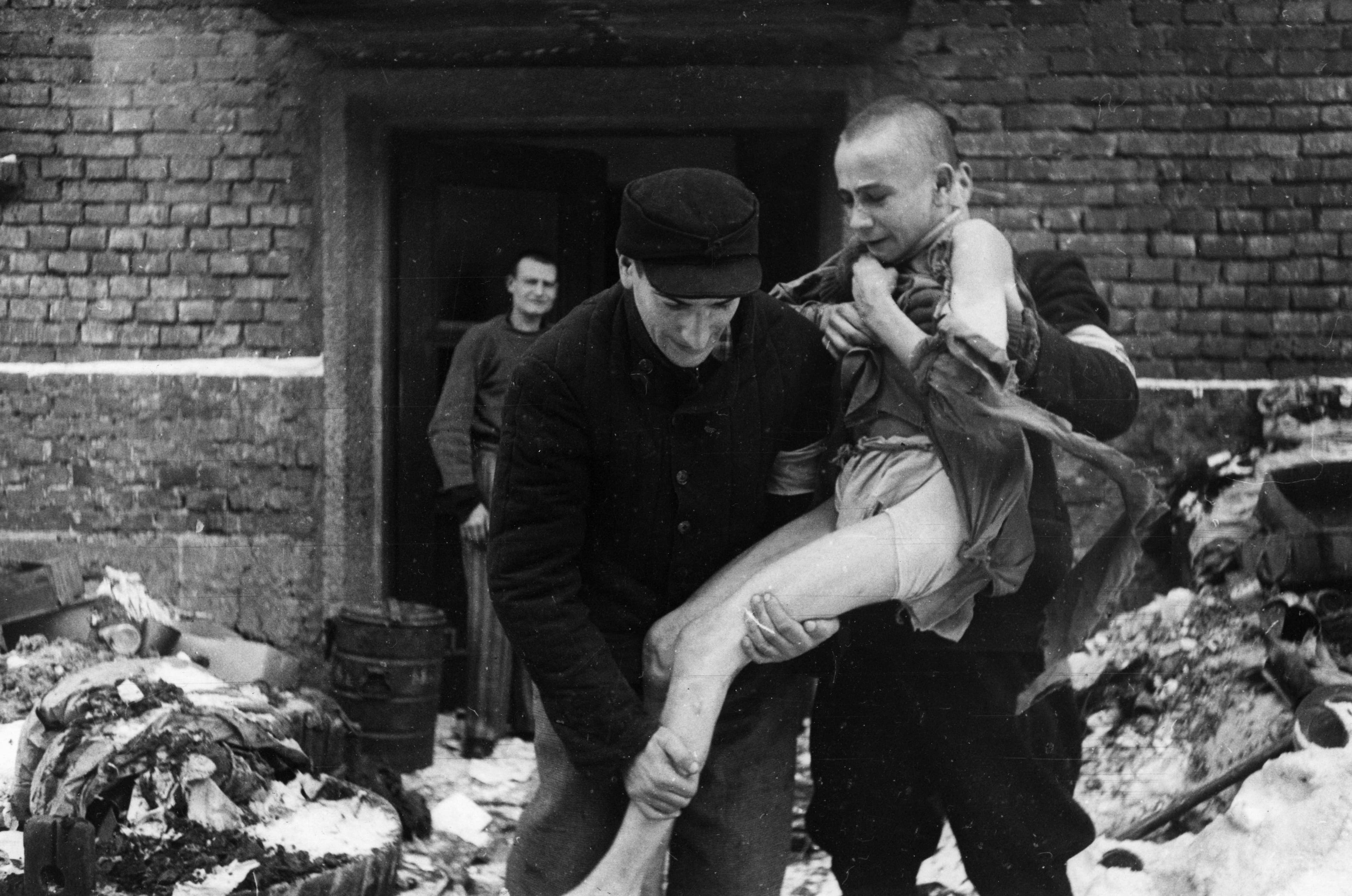
A 15-year-old Russian boy, Ivan Dudnik, is rescued. The teen was brought to Auschwitz from his home in the Orel region by the Nazis.

Two children pose in the Auschwitz medical station after the camp's liberation. The Soviet army entered Auschwitz on January 27, 1945 and released more than 7,000 remaining prisoners, most of whom were ill and dying.

This is a card taken from hospital files produced by Soviet staff after the liberation of the camp. The information about the patient, labeled No. 16557, reads, "Bekrie, Eli, 18 years, from Paris. alimentary dystrophy, third degree."

This medical card shows 14-year-old Hungarian boy, Stephen Bleier. The card diagnoses Bleier with alimentary dystrophy, second degree.
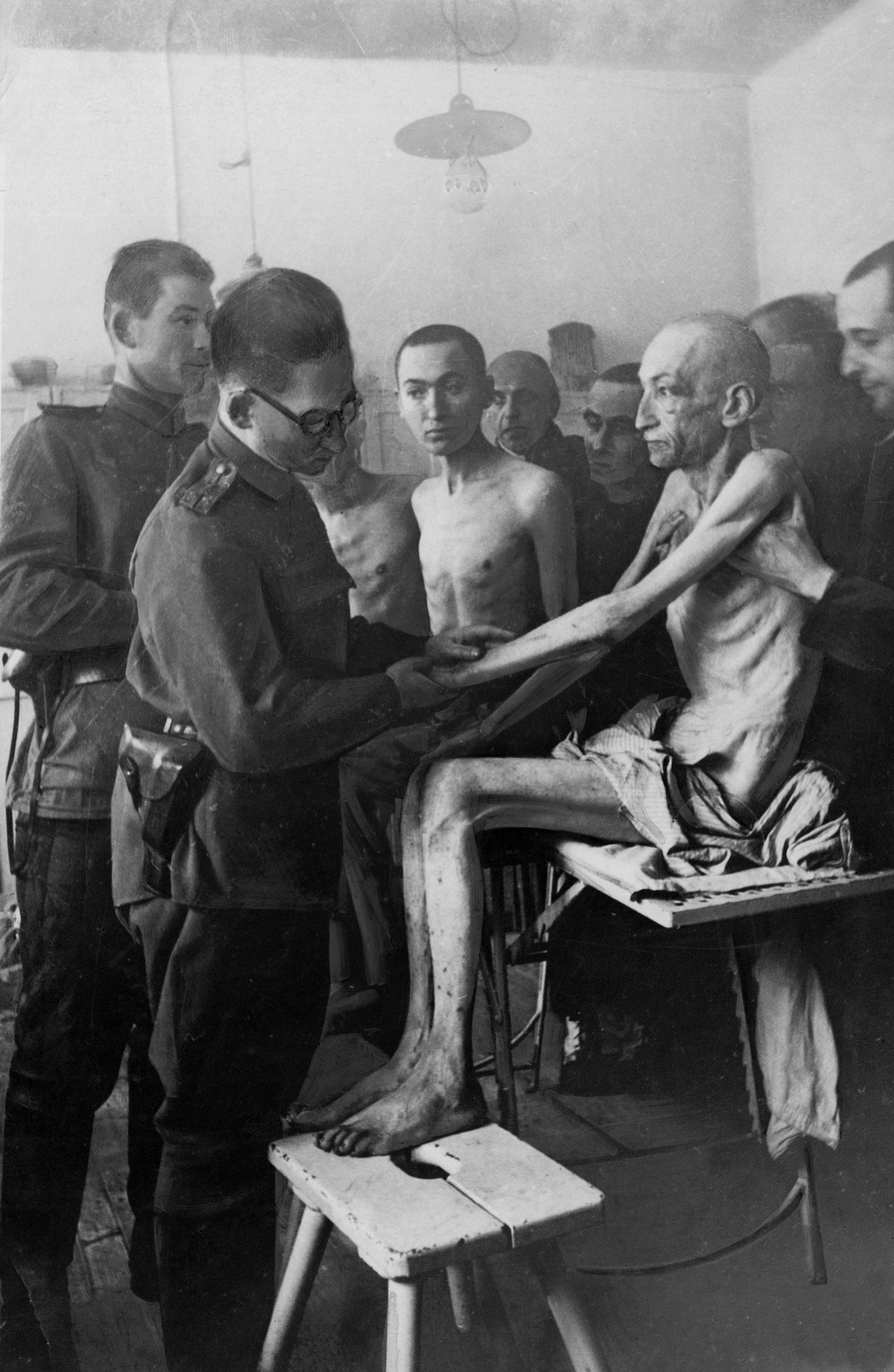
A Soviet army surgeon examines an Auschwitz survivor, Vienna engineer Rudolf Scherm.
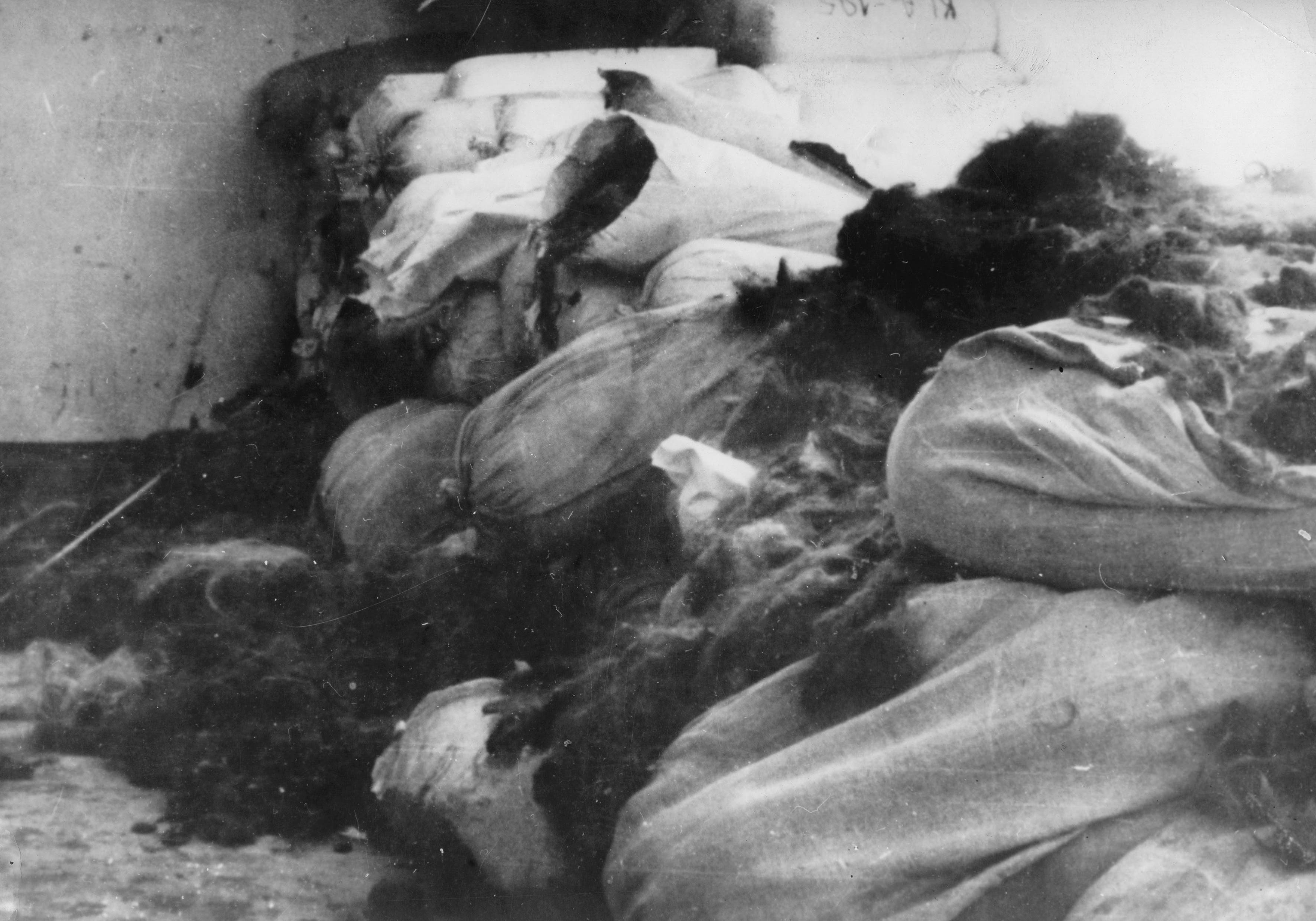
Seven tons of hair, shown here in a 1945 photo, were found in the camp's depots. Also recovered at the camp were some 3,800 suitcases; more than 88 pounds of eyeglasses; 379 striped uniforms; 246 prayer shawls, and more than 12,000 pots and pans brought to the camp by victims who believed they would eventually be resettled.
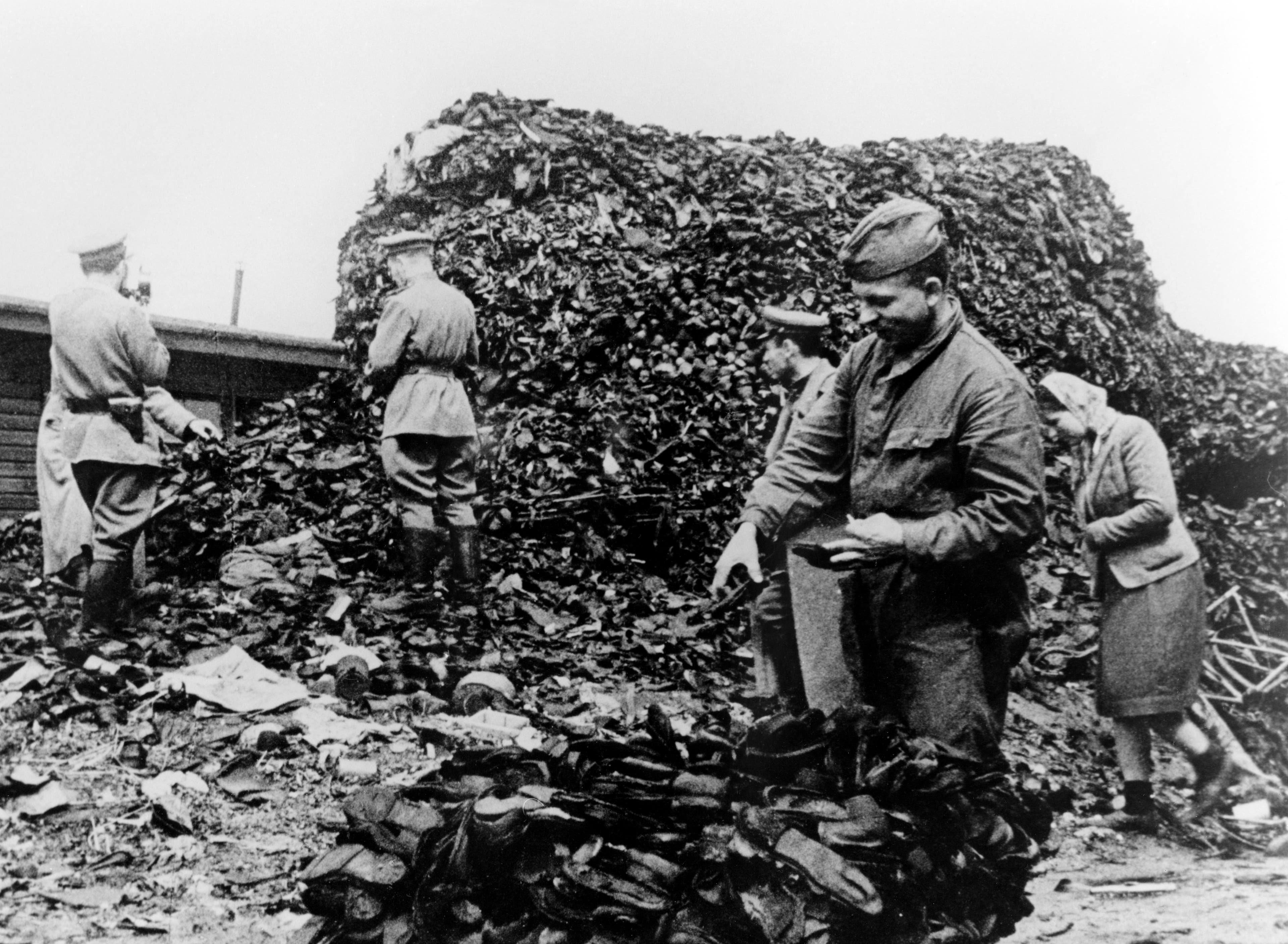
Soviet soldiers inspect a pile of clothing items left behind at the camp on January 28, 1945.

Civilians and soldiers recover corpses from the common graves of the Auschwitz-Birkenau concentration camp in this February 1945 photo. Some 1.3 million people were sent to the camp, according to the Holocaust Memorial Museum, and more than 1.1 million were killed.
1 / 15: Sovfoto/Universal Images Group/Getty Images